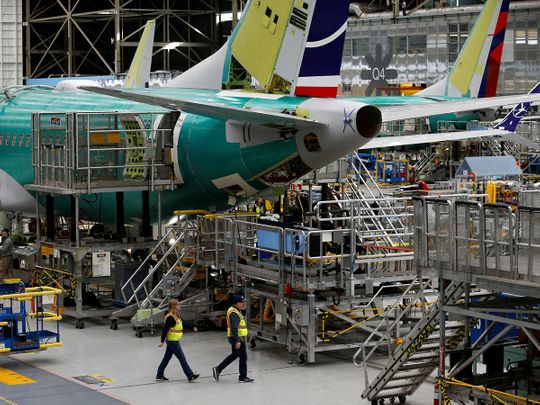
Washington: US manufacturing activity hit more than a 2-1/2-year low in June, with a measure of new orders received by factories tumbling, amid growing anxiety over the escalation in trade tensions between the United States and China.
Other data on Monday showed construction spending unexpectedly fell in May as investment in private construction projects dropped to its lowest level in nearly 2-1/2 years.
The reports were the latest indications that economic growth slowed in the second quarter after getting a temporary boost from exports and an accumulation of inventory.
The Institute for Supply Management (ISM) said its index of national factory activity dropped to 51.7 last month, the lowest reading since October 2016, from 52.1 in May.
A reading above 50 indicates expansion in the manufacturing sector, which accounts for about 12 per cent of the US economy.
Economists polled by Reuters had forecast the ISM index would fall to 51.0 in June.
The ISM said businesses “expressed concern about US-China trade turbulence.” The United States’ bitter trade war with China has hurt business sentiment. That, together with disruptions to supply chains caused by import tariffs, is weighing on manufacturing.
President Donald Trump and Chinese President Xi Jinping on Saturday agreed to a trade truce and a return to talks. But Trump said he was “in no hurry” to cut a deal and Chinese state media warned there was no guarantee an agreement would be reached.
Manufacturing is also taking a hit from an inventory overhang, which has resulted in businesses placing fewer orders with manufacturers. A reduction in the production of Boeing’s MAX 737 aircraft, which was grounded in March following two fatal plane crashes in five months, is weighing on activity.
The weakness in factory activity is in sync with a slowdown in economic growth following a temporary boost from exports and an accumulation of inventory. Consumer spending is rising moderately, while the pace of job and wage growth has slowed. In addition, the housing market is struggling and the goods trade deficit widened in May.
The ISM’s new orders sub-index decreased 2.7 points to a reading of 50.0 last month, the lowest reading since December 2015. But factories reported hiring more workers, with a gauge of manufacturing employment rising to 54.5 from 53.7 in May.
US Treasury yields rose from session lows and the dollar extended gains against the yen and euro after the release of the data. US stocks were trading higher.
Weak construction spending
In a separate report on Monday, the Commerce Department said construction spending declined 0.8 per cent, the biggest drop since last November. Data for April was revised to show construction outlays rising 0.4 per cent instead of being unchanged as previously reported.
Economists polled by Reuters had forecast construction spending would rise 0.1 per cent in May. Construction spending fell 2.3 per cent on a year-on-year basis in May.
Construction spending surged in the first quarter, boosted by increased investment in roads and highways by state and local governments.
Spending on private construction projects dropped 0.7 per cent in May to the lowest level since January 2017. That followed a 1.0 per cent decline in the prior month.
Private construction
Private construction outlays also fell in March.
Investment in private residential projects fell 0.6 per cent in May to its weakest level since December 2016, after a 0.6 per cent decrease in April. Private residential construction outlays have now declined for five straight months.
Homebuilding has remained weak even as mortgage rates have dropped sharply from last year’s high levels. Spending on residential construction has contracted for five straight quarters.
Spending on private non-residential structures, which includes manufacturing and power plants, decreased 0.9 per cent in May after plunging 1.4 per cent in the prior month.
In May, investment in public construction projects fell 0.9 per cent after surging 4.5 per cent in April. Spending on state and local government construction projects slipped 0.6 per cent after jumping 4.3 per cent in April.
Outlays on federal government construction projects tumbled 5.2 per cent in May after rising by 7.3 per cent in the prior month.












